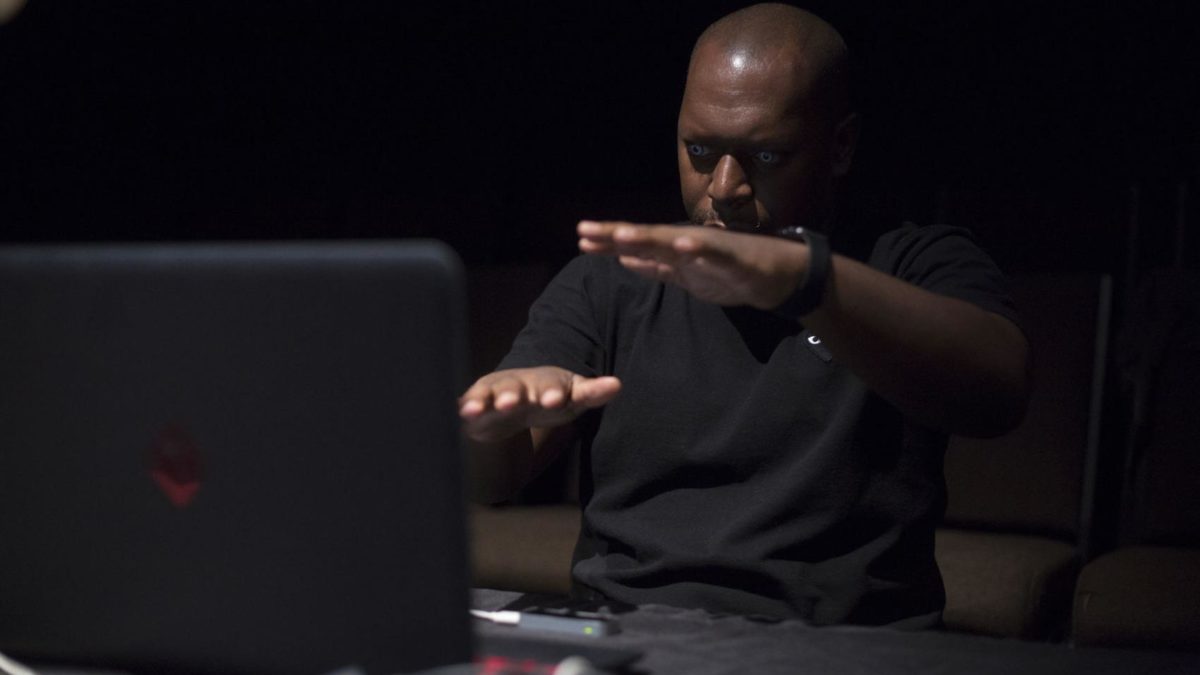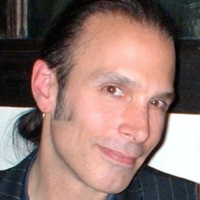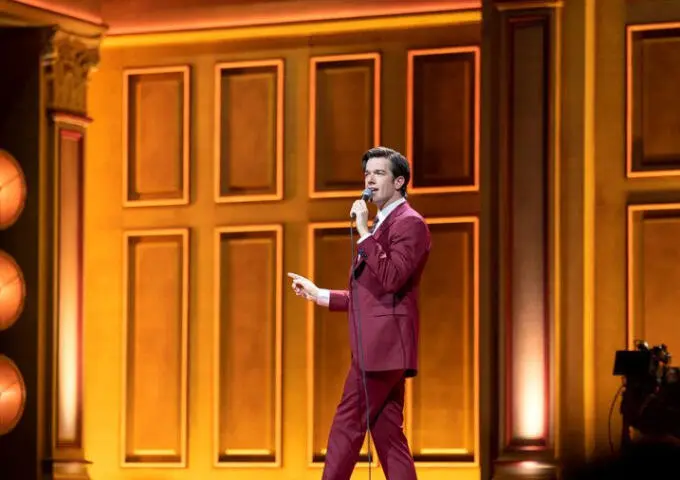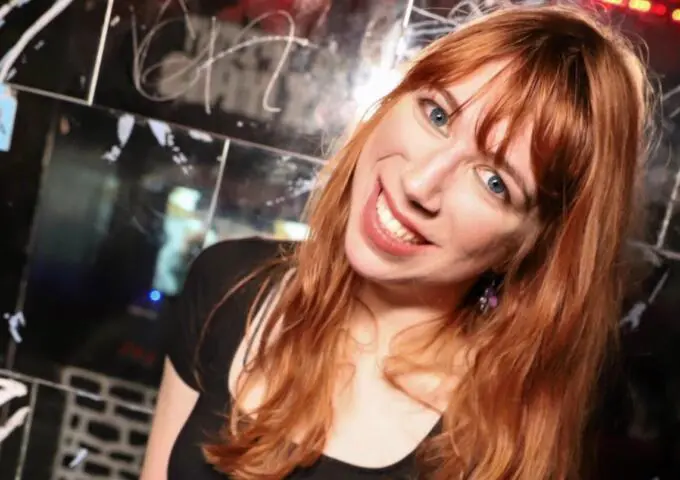Not long ago, I read an interview with multi-genre interdisciplinary artist-singer Joseph Keckler.
In town for “Let Me Die,” a joint showcase of 2019’s Philadelphia Fringe Festival and Opera Philadelphia’s O19, he complained about the vague identifiers that define his craft. “People come up to me and say ‘Oh you’re really a conceptual artist,’” Keckler told The New York Times. “I’m not saying I’m a conceptual artist; I’m saying I am a bewildered person who does things.”
If Keckler is bewildered, Rashaad Newsome — who starts “BLACK MAGIC,” the artist’s installation-performance-competition package on Sept. 12 — must be overwhelmed.
The New Orleans-born, NYC-living, queer, black artist is putting together what he calls “a holistic reflection on agency, blackness and the futurity of intersectional identities and oppression.” On top of all this, Newsome is a Master of Heraldry with a capital ‘M’, heraldry being both the science and the art of devising and displaying armorial insignia, along with tracing and recording its noble genealogies.
To call Newsome’s diverse aesthetic(s) ambitious is like saying DeSean Jackson is cagey, or Taylor Swift is business savvy. It’s an observation obvious from the wealth of his works and their questions of patriarchy and agency.
On the afternoon of our conversation, Newsome just received an up-to-date rendering of his AI creation, “Being,” and was consumed by its colors, contours and the cut of its cold, handsome, ancient-to-the-future jib. When I told him this is as good a place to start as any, as there’s much to discuss with his multiple avenues and interests on display during ‘BLACK MAGIC,’ Newsome let out a confident (but not cocky) laugh, and said, “I know.”
Why do you trust AI as a medium? I’m not looking at it as some futurist fright wig or scare-scape. Artificial intelligence is so amorphous, it seems as if it could be unreliable.
AI is created by us. If it is not to be trusted, that’s on us.
I’m not so sure I trust us so much either.
Yeah, but you got to be with us. We’re all here in the capital of the patriarchal gaze, so here we are: What are we going to do within that frame? We can try to expand the frame, or escape the frame.
But, we’re in the frame.
What I’m trying to do is deploy the imagination as a tool to expand the frame. The AI component was useful as so much of that project’s work has been a conversation around the complexity of agency and different gestures. The work started out as these faces as a way to talk about agency, and now has become a fully embodied figure and has also moved into sculpture, where we’re out of the frame and into the space, with three-dimensional forms.
What is it like for a work to start a conversation? To participate in the conversation is what it seems like you’re going for with ‘To Be Real.’
It’s a conversation I’m having with myself. That’s when AI became a useful tool for me, to explore that conversation. Opening up that Pandora’s box allows for a whole other set of issues to crawl in.
‘Being’ sounds as if she/he is captivated by Foucault, Bell Hooks and Janet Mock. ‘Being’ looks black. Just like you. Would I be off the mark in assuming ‘Being’ is you?
It’s definitely me, but it’s those inspirations as well. And more. ‘Being’ is in a state of flux. When I was creating ‘Being,’ I was thinking about what conversations I’m exploring in my work. Who are the folks that influence that, and guide those conversations? They made up ‘Being’s’ mind. It’s a conversation I’m having with myself. What does agency look like within AI? There’s tons of debate as to whether robots would ever have achieved. We already question whether robots can achieve sentience and what does that mean. What isn’t debatable is that you can simulate agency, so for me, within that peculiar space that robots and AI occupy, you can create agency.
Older works of yours, such as ‘Stop Playing in My Face,’ are about agency as it relates to trans and femme women of color — how they access agency. Why then, why now?
What does agency look like is what I ask in the work. It’s a simulation. Agency is a form of resistance against subjugation, the limitations. It speaks against that. There are simulations where it goes rogue and breaks all protocol. It expresses itself. ‘Being’ now, however, is its first generation, just being born, a toddler. Its mind has to be populated by information and interaction. A sense of how to be with human beings.
Your work is pretty singular, but do you feel as if you work in a vacuum or as part of a continuum? I ask because I saw Flying Lizard the other night, and so much of what ‘Being’ seems to be as part of this latest production touches on the ideas with ‘To Be Real.’ I don’t think either of you are taking from the other, but there is a zeitgeist — a movement, a sweep — you are sharing that is worth considering.
I hope so. I don’t want to be too over-determined. What’s germane to me is the work I’m doing, and I’m definitely influenced by people around me doing incredible things. I try not to think too much about that. It’s who I am. It’s another frame, but the work I’m doing is trying to get away from the frame. A resistance to the frame. I don’t even want to create frames.
OK, so you are a Master of Heraldry, a King of Arms. That’s fantastic. Do you mind telling me how heraldry fits in with everything you do in your work and? How did you make such an arcane form your own? I’m guessing making it modern and/or present couldn’t be the point of that.
No. It’s not the point at all. What truly drew me to heraldry is the design. It is, essentially, this image made of images representing distorted notions of power, rank and pedigree within popular society. That was an interesting form to fuck with. Popular culture is where the pedagogy is. I was into the culture, too, of domination.
Popular culture is broad. What could be a focus, or your focus?
I was born in 1979, so I grew up at the very height of hip hop, a form that started out as a radically emotional voice and turned into this capitalist, patriarchal and, in some ways, frivolous voice. I should add that there are other musical genres done by black folk that do that. With that, heraldry seemed to be a useful tool to discuss this, the domination of a culture — the consumer culture of objects and goods, which are a manipulation — that says we need THINGS in which to enjoy life rather than looking within. This is what was created by heralds. I studied that, and the kings of arms at that time, in order to become an Officer of Arms. That, for me, created my own story within the three tier system of being an Officer: Percevant, Herald, King. I could use that as a narrative. I can use those markers to represent visual shifts in the work.
There is also an element of the tournament, as one of the roles of the herald is to organize tournaments, to keep score.
When I moved to King of Arms, I started considering the beginnings of the Baroque and how I came to heraldry through looking at art in context and seeing coats of arms framing the architecture of its time. You begin to play with ideas of the ornament and the architecture. They become less like symbols than hard graphic images using the same consumer language based in popular culture. I moved on from that conversation and into an actual space in which to discuss agency.
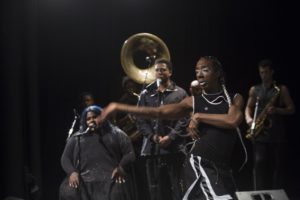
This conversation in a space — this competition, the judging — figures into the third part of ‘BLACK MAGIC,’ which is vogue-ing. Yes?
Yes, absolutely.
As a multi-disciplinary artist crafting differing identities for your work, do you start with an idea and see what folder it falls into, or do you open a new folder and push yourself to fill it?
A little bit of both. It’s all so organic. I might know that I want to make a collage, and I’ll look at imagery I have cut out already. Sometimes I’ll see an image that makes sense to something I’m doing, maybe that collage. Spending time too with ideas and material…. They tell you what they want to do.
Where they want to be, or travel.
Sometimes I will scan and place an image or an idea into a 3D space and build from there. Maybe into 4D. Maybe an environment of its own. If it does THAT, then I need to get the green screen and shoot somebody because an environment needs people. Then that video might tell me that it would look great as live art, so that comes back around to performing. It’s all a moving target and I’m just trying to do what feels good.
How do these three separate events fit under or make up the ‘BLACK MAGIC’ rubric?
I was thinking of how much my work was influenced by black cultural production, works that aren’t even part of this project; the practice in general, the gesticulations associated with black folk, like Vogue Femme performance, for instance. I focused on that which compelled me to pull from that creative thing. When I began to think of the cultural production created by people who live within the capitalist, empiric patriarchy, something magical came to mind. Those productions are still incredible and celebrated despite such harsh conditions. There’s something magical about that. The legacy of black folk, that in some way we are the descendants of slaves in America, and how they were able to imagine themselves out of that… there’s something magical about that too. There was the #Black Girl Magic I loved not so long ago. Plus, I’m from New Orleans, and its whole voodoo thing… There’s just a magical quality that exists within black folk that is very seductive and interests me totally. I’m trying to tap into that. As black folk, we glamor. I’ll glamor you so to get out of this … that’s the through line, which connects the projects. Especially the ball, pulling you out of the framework of ART with a capital ‘A’. It’s an event.
How does the concept of lenses fit into your work, as you are literally work with augmented reality lenses in ‘To Be Real’? How does this connect to what you’re calling a ‘Get Your 10’ lens to heighten everyone’s performative abilities during the vogue competition?
Having a formal training in video and working with the moving image, one has to consider notions of surveillance, what that looks like for the people who occupy that frame — each frame — the surveillance put on black folk and queer folk. People respond to that sense of being surveilled.
That’s where your glamor-ing comes in.
Yes. Glamor-ing can be connected to that. Colonization makes you aware of another’s gaze, and if you colonize well, a person will enact that idea of how they should be, for you. Part of that process then means that we have to free ourselves from surveillance. The lens becomes an allegory to think of all that more.
I get that the ‘FIVE’ performance piece looks at the five elements of Vogue Fem (duckwalk, catwalk, hands, floorwork, spins and dips), but how did that become a broader, avant-garde musical piece? What was its spark?
‘FIVE’ had multiple sparks. I was active in the vogue community, so whenever I see people perform, I’m seeing lines and shapes. And I ask myself, ‘Can I actually capture that?’ I built on that through visualization but in a more culturally specific way. Then it became about how I could stage this in a performance context, the complication of hegemonic spaces, and how to do that in a way that is not at my expense or the expense of the bodies at work. Then we just did it, and the stage show took the form of a cypher, with me tracking the dancers. But I wanted to add to that. Because the dancers are improvising, the idea of the jazz ensemble sprouted up, especially as that was such a big part of my growing up in New Orleans. Improvisation is a key element of jazz and my performance work. I was thinking about the radicality of black social life, too. Vogue, in its original context, was radical. So was jazz. Jazz was an archetype for black social life, usually tooted in a hetero space, which meant that it couldn’t be inclusive to ALL black social life, so I wanted to make sure that my space looked at the jazz ensemble as an assembly for all, where we’re all improvising, to bring forth transgression. We collectively become the radical black figure. It’s almost a séance for this transgressive black form.
Does that explain your utilization of both rappers and opera singers in ‘FIVE’?
Vogue comes with its commentators, like a rapper, but is more rooted in scat. I wanted that as a primary voice, sonically. And the opera voice is so dramatic and emotional. The emotional black voice is always being suppressed, even when living through situations that are traumatic, dealing with aggressions. The natural response is emotional. But as no one can deal with black emotionalism, it gets suppressed, or turned off. Both the MC and opera singer does that in different ways.
‘BLACK MAGIC’s’ competitive ball is the final part of the puzzle. I’ve witnessed balls in my time, but your categories are those of social justice issues rather than ballroom’s usual, such as glamor, aspiration or walking for realness. Or is this the new form of realness and aspiration?
That was a part of my ball experience that I wasn’t finding, a space that was incredible to be in as you are part of the community, but you want more. That’s the whole thing behind intersectionality. As part of my own decolonization, the ballroom, as a space, was lacking. So I needed to do my own ball while thinking critically about ballroom in general. What would it be like to have a ball with categories such as ‘Runway, bring it like Mickalene Thomas.’ What could a queer kid, in that moment, express about art in the highest context in that performance rather than some curator who studied in the traditionally European hegemonic institution? What I try to do is push boundaries. So, my ball is open to all, in contrast to the usual ballroom categories such as “Butch Queen” or “Military,” binary categories that no one in ballroom is LIVING by.
That’s a great point, as none of these walkers are living the binary traditions of gender.
Ballroom’s usual categories put them right back into that frame. I don’t do realness. That’s an old ideal. Nor do I do best dressed categories, as that is rooted in capitalism. So, for me, my balls are about deploying the imagination, to transgress.
Without curating, how do you think your ballers — everyone you say is coming — will GET IT? It would be as if you were asking marathon runners to jump into flippers right before the big race.
I think when we put out the categories through social media, it will be a rupture. You have to reposition people to think different, to ask why binary constraints exist at all. That’s a big part of everything I do. Education will happen or not happen. Seeing that will be transgressive for ballroom. It’s a strategy as to how to create a transgressive act or image to start their own decolonization process.
Black Magic | Now through Nov. 30. Philadelphia Photo Arts Center, 1400 N. American St. philaphotoarts.org/event/rashaad-newsome-black-magic/
TWITTER: @ADAMOROSI
